The last American convertible was the 1976 Cadillac Eldorado until the 1982 Chrysler LeBaron brought the wind-in-the-hair back. But what was Chrysler Corporation’s last convertible? For Dodge, it was the 1971 Challenger, but its final full-size convertible was the 1970 Polara. Our Pick of the Day is an elegant example of this C-body. It is listed for sale on ClassicCars.com by a dealership in Hilton, New York. (Click the link to view the listing)
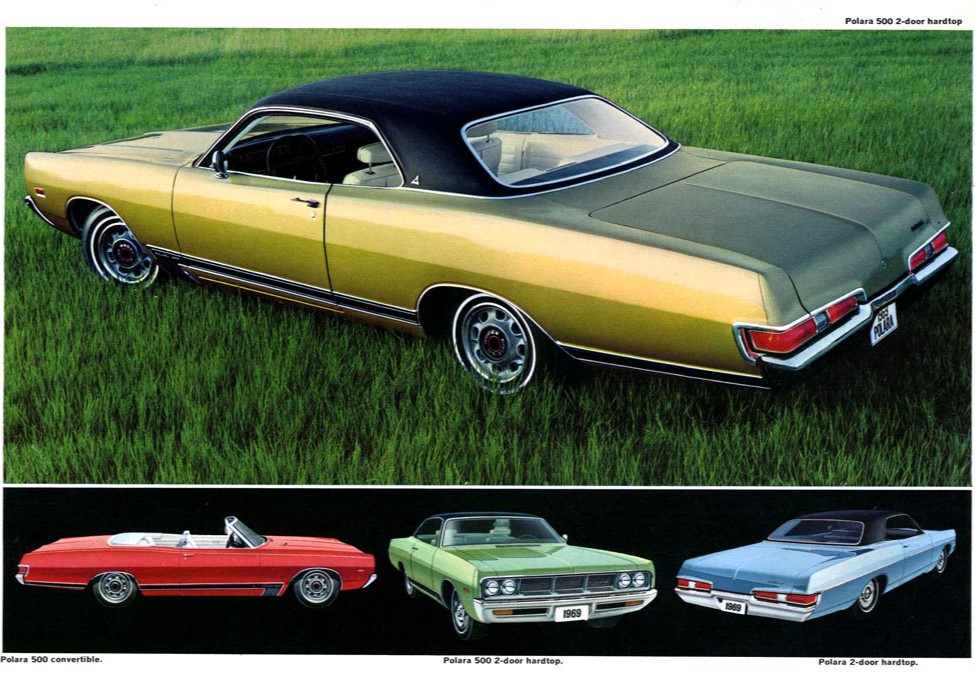
Affectionately known as “Sea-bodies” due to their boat-like size, the 1969 “Fuselage” Chrysler products sought to redefine the great American sedan. Featuring greater curvature in its side window glass and body side panels, Chrysler Corporation designers sought to create a more organic design unit. Insides were roomier too despite the physical size being quite similar to the outgoing 1968.
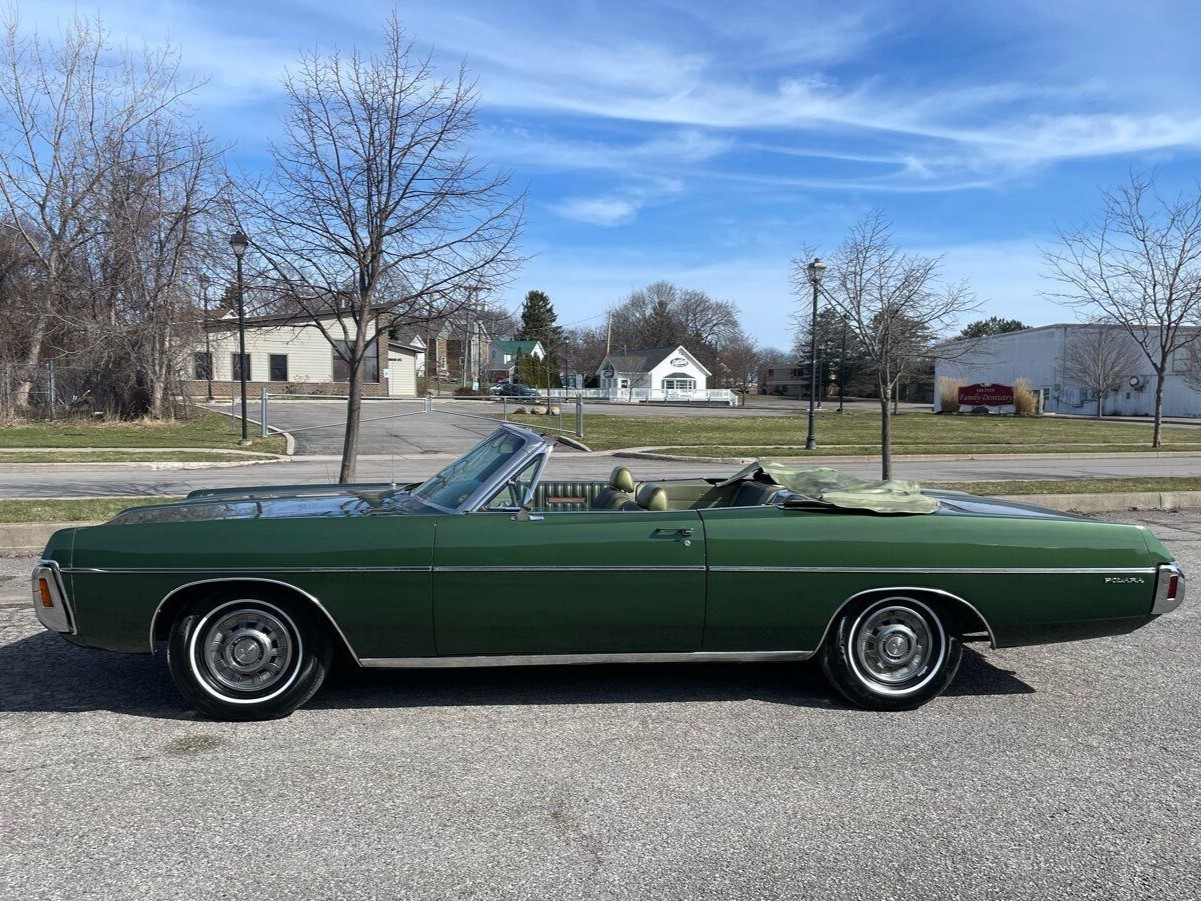
The lineup was the same as before, with the Polara maintaining the bread-and-butter side of production. Four-door sedan and hardtop, two-door hardtop and convertible, and station wagons played the role. The Polara 500 added sportiness in the form of special trim and bucket seats, while the Monaco added a touch of fancy to the four-door sedan and hardtop, two-door hardtop, and station wagons. Add buckets to the Monaco and it became the Monaco 500. There also was a luxurious Monaco Brougham package.
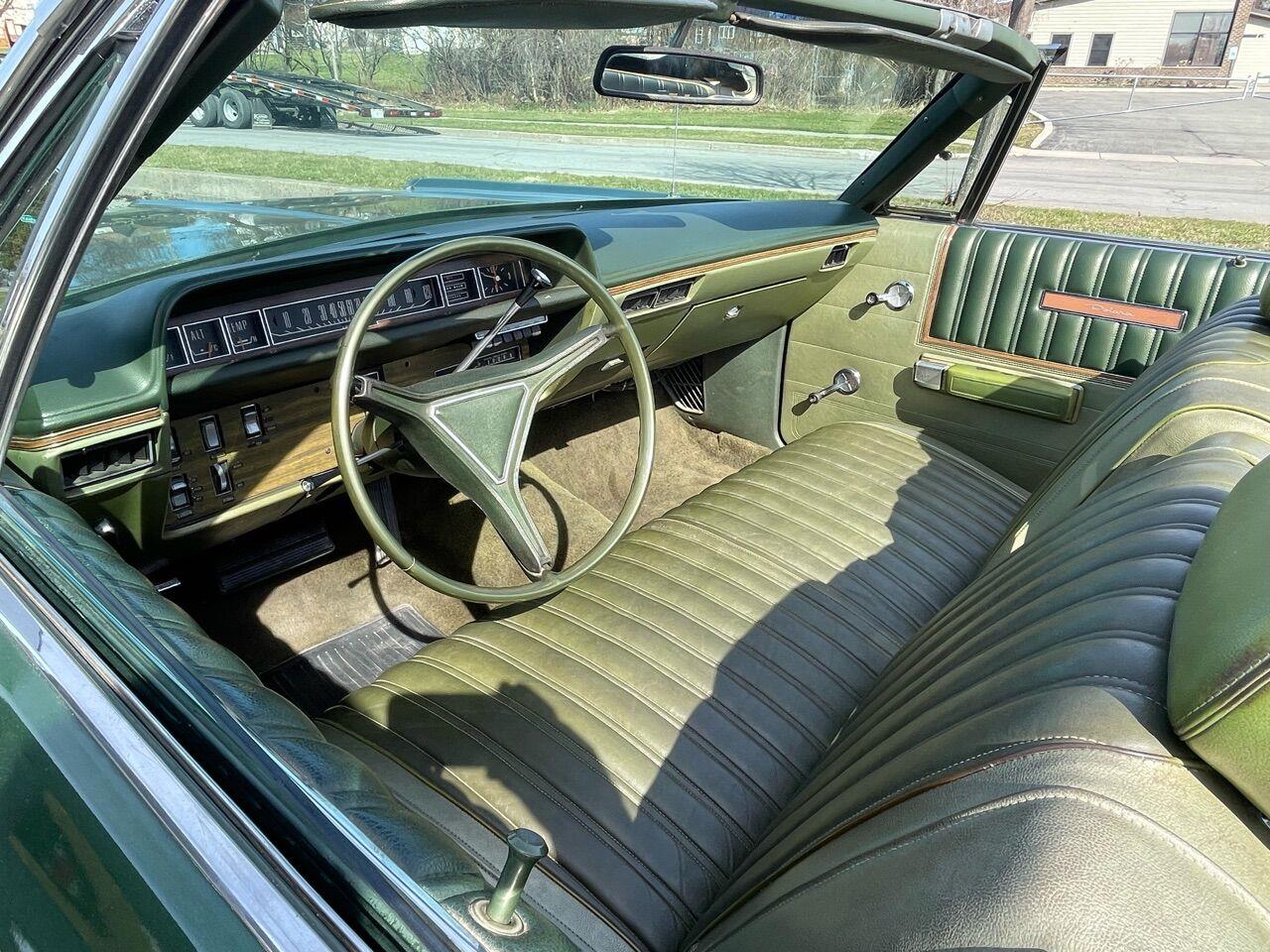
For 1970, styling resembled the ’69 but was noticeably different, with the hood lengthened by three inches and the deck shortened by four. The same could be said for the taillights, which moved to the bumper. Dodge added the Polara Custom line as a complete mid-line series featuring all the base Polara body styles save the convertible and wagons, while the Polara 500 disappeared. As usual, the Monaco featured its own grille and taillights, with the back-up lights being unique in that they were slotted in the sheet metal bumpering both sides of the trunk lid. As before, all full-size Dodges came with V8 power.
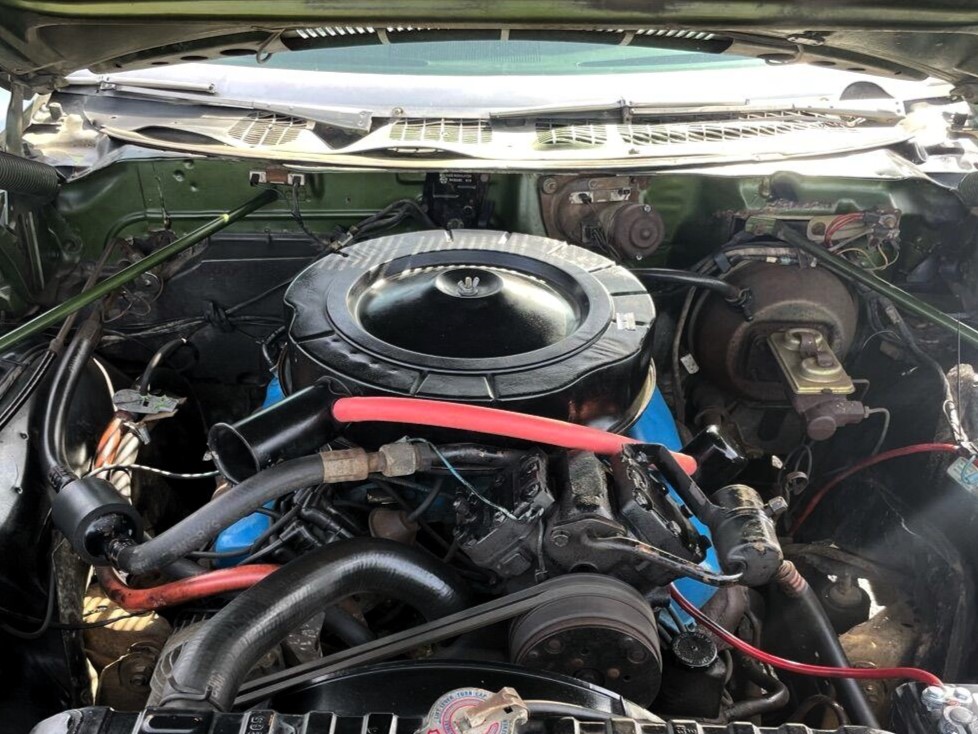
A lot was going on in 1970, including a mild recession, but even more notable was the decline of the sporty car market. Convertibles in particular had been making a downward shift, and Dodge convertibles had never been particularly strong in sales anyway. When the dust settled, only 842 were built for 1970 when Dodge called it a day.
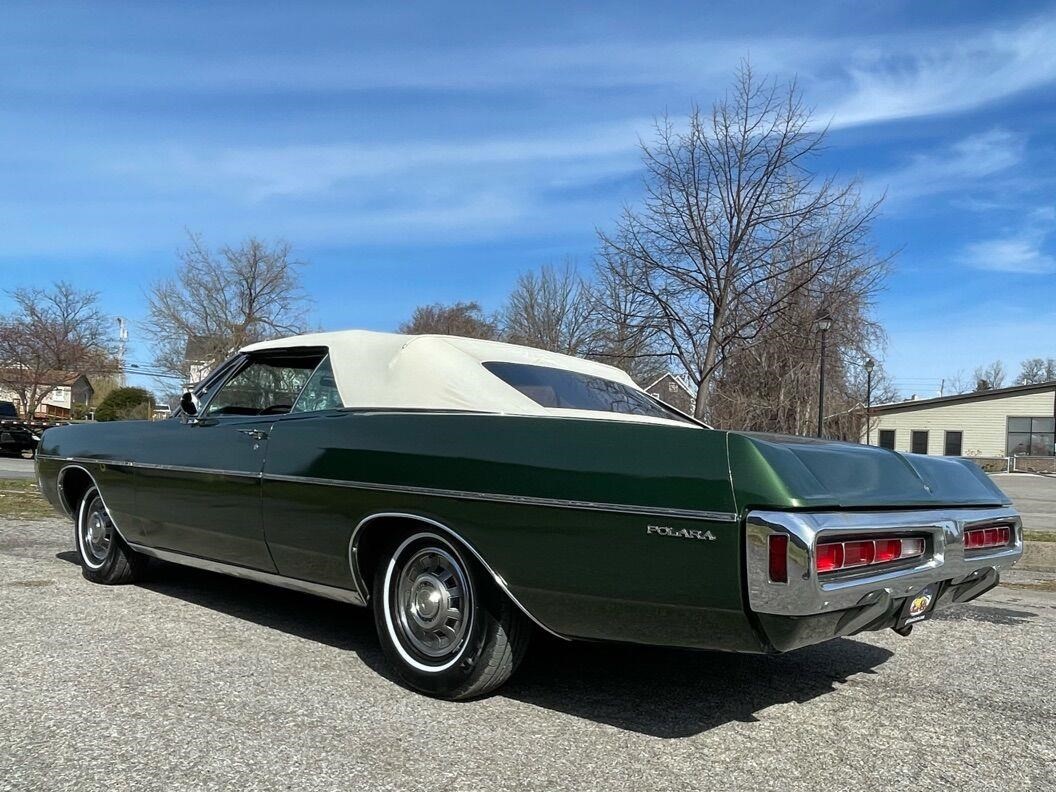
This Dark Green metallic 1970 Dodge Polara convertible is a rare open-air chariot that is powered by the optional 383 two-barrel. Nothing initially fancy inside, as the Polara has the standard vinyl bench seat in green and white convertible top, but the option list has some good stuff including the Light Package (which included fender-mounted indicators), tinted glass, air conditioning, belt moldings, front and rear bumper guards, AM radio, bodyside molding, power steering, and automatic transmission.

With this 1970 Polara convertible, you will have rarity and style on your side. Did we mention it’s affordable too? For $19,995, can you see yourself capturing the rays in this thing?
Click here for this ClassicCars.com Pick of the Day.



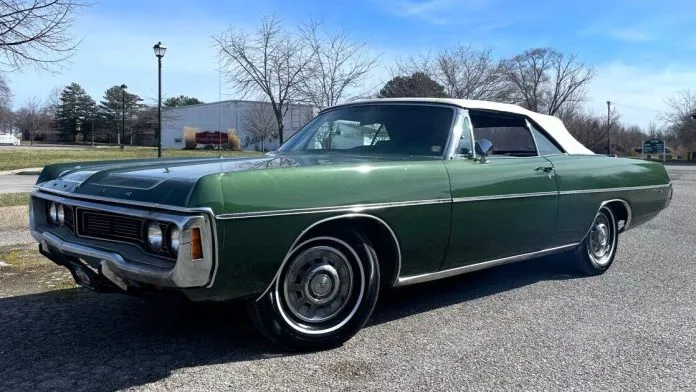


Good looking car. Seems to be in pretty good shape for its 54 years. Should make a great cruise night, show car for someone. A set of 16 inch modern magnum 500 wheels , duals, and fuel injection for the engine and you have a car that you don’t see often.
What is your bottom price for 1970 Dodge convertible?
You need to reach out to the seller. Click on a pic to get to the ad.
I’m glad to see that nobody has installed a set of trombone-sized dual exhaust pipes sticking out the back.
That is one sweet green machine!
I remember these cars because they are what most CHP officers drove when I was a teenager. No, I didn’t get stopped a lot by them. Dodge Polaras were their fave and several of my friends families owned them. Mopar’s were always a little different than Ford or Chevy but they are great cars. Maybe that’s why in 1972 I purchased a 1968 Plymouth Fury III Sport at an auction. It was red with a black vinyl top and black interior but best of all it was a 440 4-speed. Heck Yeah! Yeehaw! I loved it but traded it in on a new B-5 Blue 1973 Charger SE 400. It was my personal car I drove every day for 18 years and 137,000 miles. Looks like this babe may still have a solid unibody and be a really sweet cruiser for someone. If I wasn’t 72 years old and 100% disabled I would buy it for myself. I got to see a lot of green Mopars like this one when I was a kid.
There’s no such thing as a Fury III Sport. It’s either a Sport Fury or Fury III.
In the 1960’s -70’s, chrysler corporation car platform’s were designated by letters. Compacts like the Dart, Demon, Valiant, Scamp, and Duster were A- bodies. Mid size cars like Charger, Coronet, Super Bee, Belvedere, Satellite, Roadrunner, and GTX were B-bodies. The full size cars, including all chrysler models were C-bodies. It was not “sea” body, and had nothing to do with the size of the car being anything like a boat.
You may be unaware, but among the fans of C-bodies, they call the Fuselage cars “Sea-bodies” because they’re boats.
There is and was A 1970 Gran Fury…Had hide away headlights and a 383…the Sport models were basically GT models.. Personally I like the paisley print vinyl tops and seats. SAYS WELCOME TO THE 70S
I think a few things are being conflated.
The Sport Fury originally was Plymouth’s buckets and console version of the Fury. By 1970, it was mainly a high-trim version of the Fury.
A performance version was the Sport Fury GT. 440 power was standard, with six barrels an option.
The Fury Gran Coupe, which debuted as a package on the 1970 Fury II, was a specially trimmed version featuring a paisley vinyl top and matching interior, plus hidden headlights. Continued into 1971.
http://www.fuselage.de/ply70/70ply_ad06b.jpg
You are right maybe. The 68 was a Sport Fury but I also owned a 66 Fury III. It was yellow with a black vinyl top, black interior and a 318. I’m sorry that at the time I wrote the comment I didn’t remember exactly. Maybe it’s because I am 72 years old and maybe you and Mark what’s his name on Graveyard Cars would get along fine.
No need to apologize, but appreciated all the same.
Fantastic boat! I had a white ’70 Polara and loved it. I swear, you could fit four adults in the front seat. I loved that thing, 383 as well. Lots of smooth cruzin. A guy came across the line and plowed into me at highway speed head-on and the only reason I’m alive today was because that Polara was built literally like a tank. RIP Polara.
I had a ’67 Dodge Polara..2 door…maroon on white..boy do I miss that car!!
Sea bodies is surely a recent nomenclature for these C bodies. As one who was living at the time these were new, I can certainly vouch for the fact that no one called them by such a name back then. Also, these were no more boats than anything offered by the competition at the time. Full size cars of that day were all too big and bulky imo.